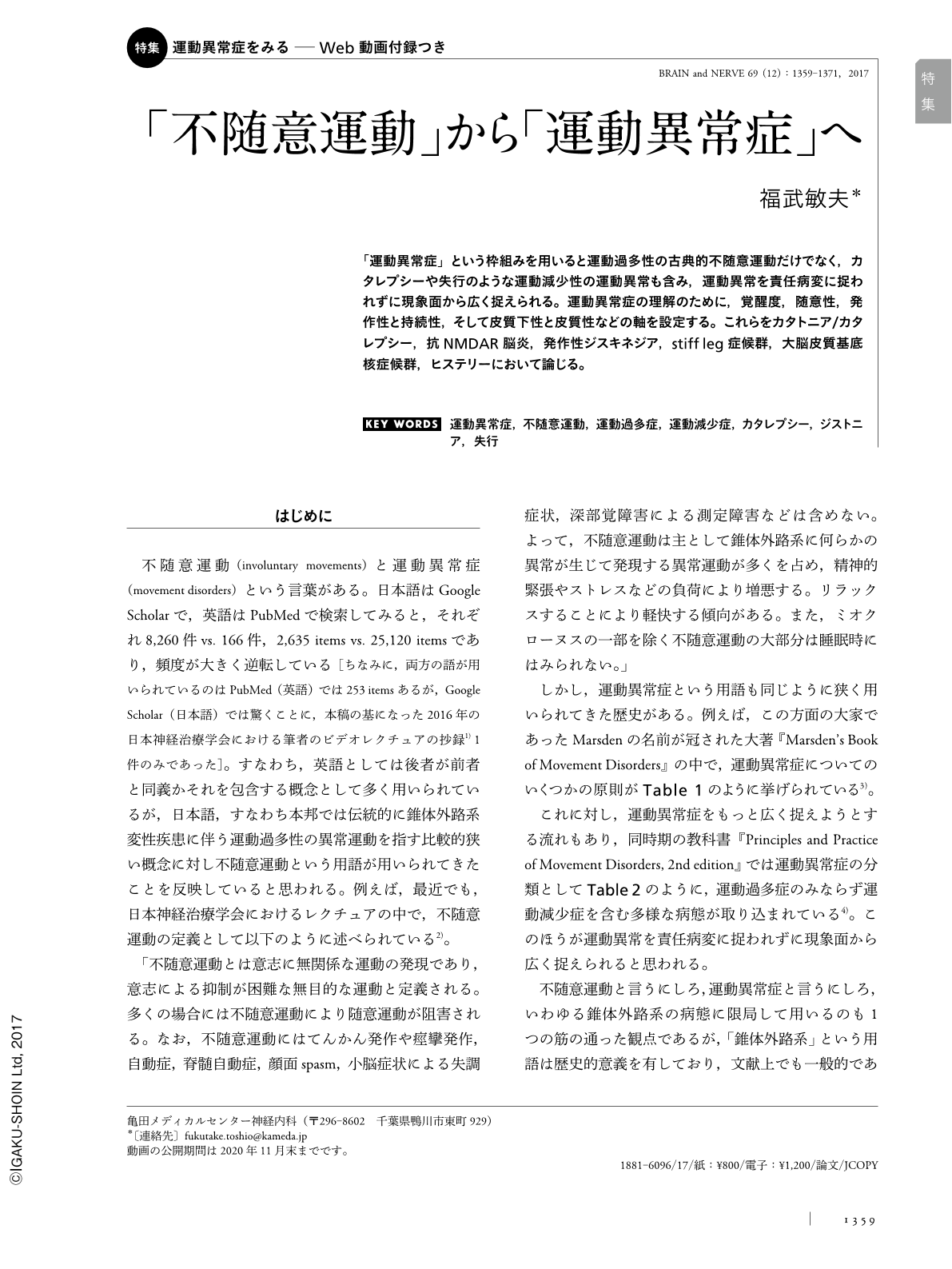Japanese
English
- 有料閲覧
- Abstract 文献概要
- 1ページ目 Look Inside
- 参考文献 Reference
「運動異常症」という枠組みを用いると運動過多性の古典的不随意運動だけでなく,カタレプシーや失行のような運動減少性の運動異常も含み,運動異常を責任病変に捉われずに現象面から広く捉えられる。運動異常症の理解のために,覚醒度,随意性,発作性と持続性,そして皮質下性と皮質性などの軸を設定する。これらをカタトニア/カタレプシー,抗NMDAR脳炎,発作性ジスキネジア,stiff leg症候群,大脳皮質基底核症候群,ヒステリーにおいて論じる。
*本論文中に掲載されている二次元コード部分をクリックすると,付録動画を視聴することができます(公開期間:2020年11月末まで)。
Abstract
Apart from the term 'involuntary movements', the term 'movement disorders' encompasses not only classical hyperkinesias but also hypokinesias including catalepsy or apraxia. It enables us to understand abnormal movements by their phenomena instead of by their localization. To advance the grasping of movement disorders, we discuss the clinical and pathophysiological features of abnormal movements in catatonia/catalepsy, anti-NMDAR encephalitis, paroxysmal dyskinesias, stiff person/leg syndrome, corticobasal degeneration/syndrome, and hysteria. Particular emphasis is placed on the roles of consciousness/unconsciousness, voluntariness/involuntariness, paroxysmal/sustained aspects, and cortical/subcortical networks.

Copyright © 2017, Igaku-Shoin Ltd. All rights reserved.


